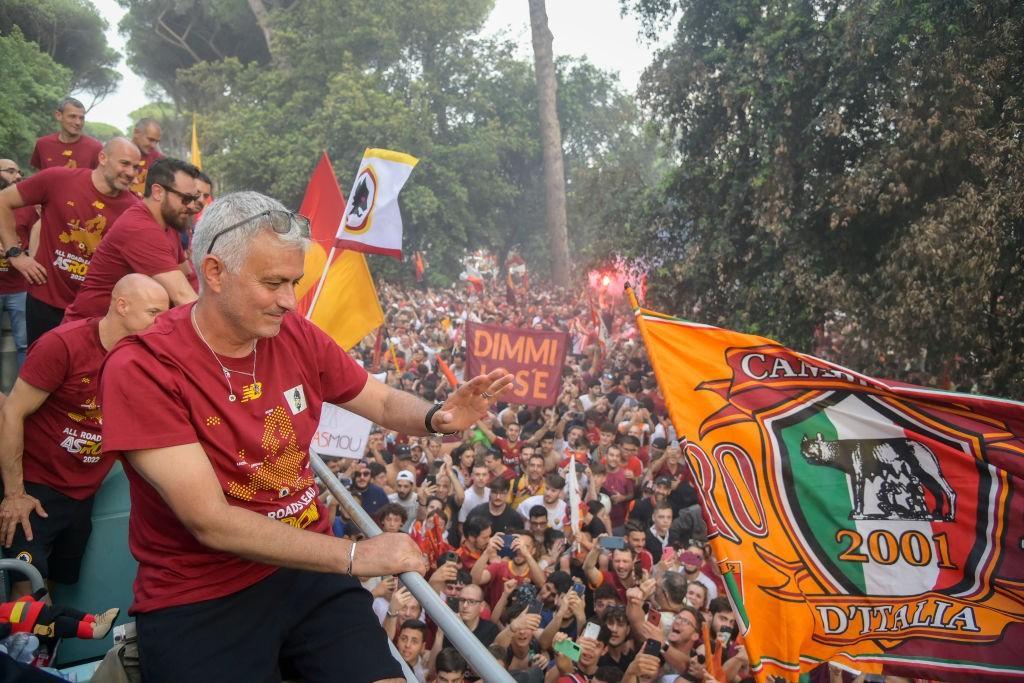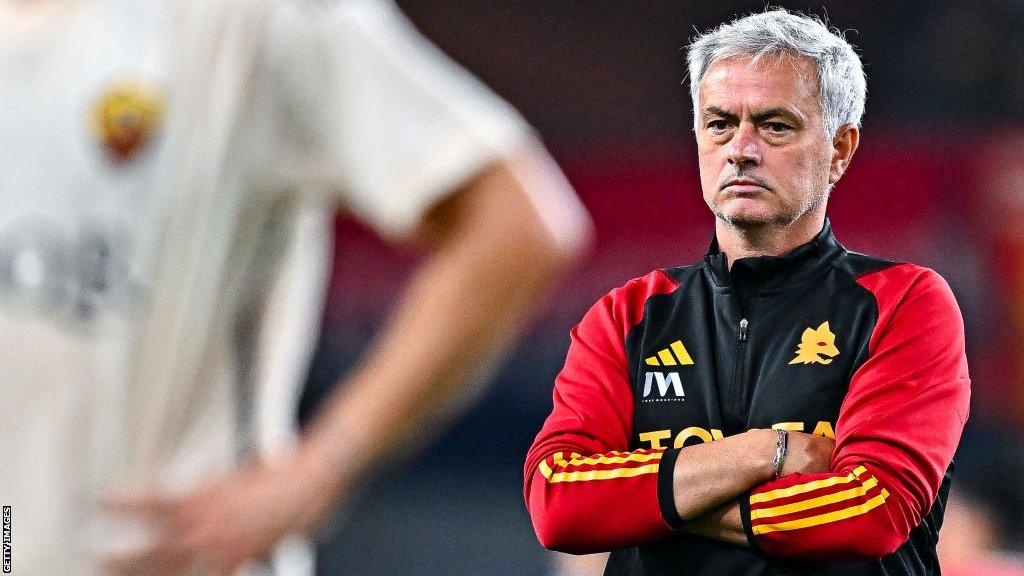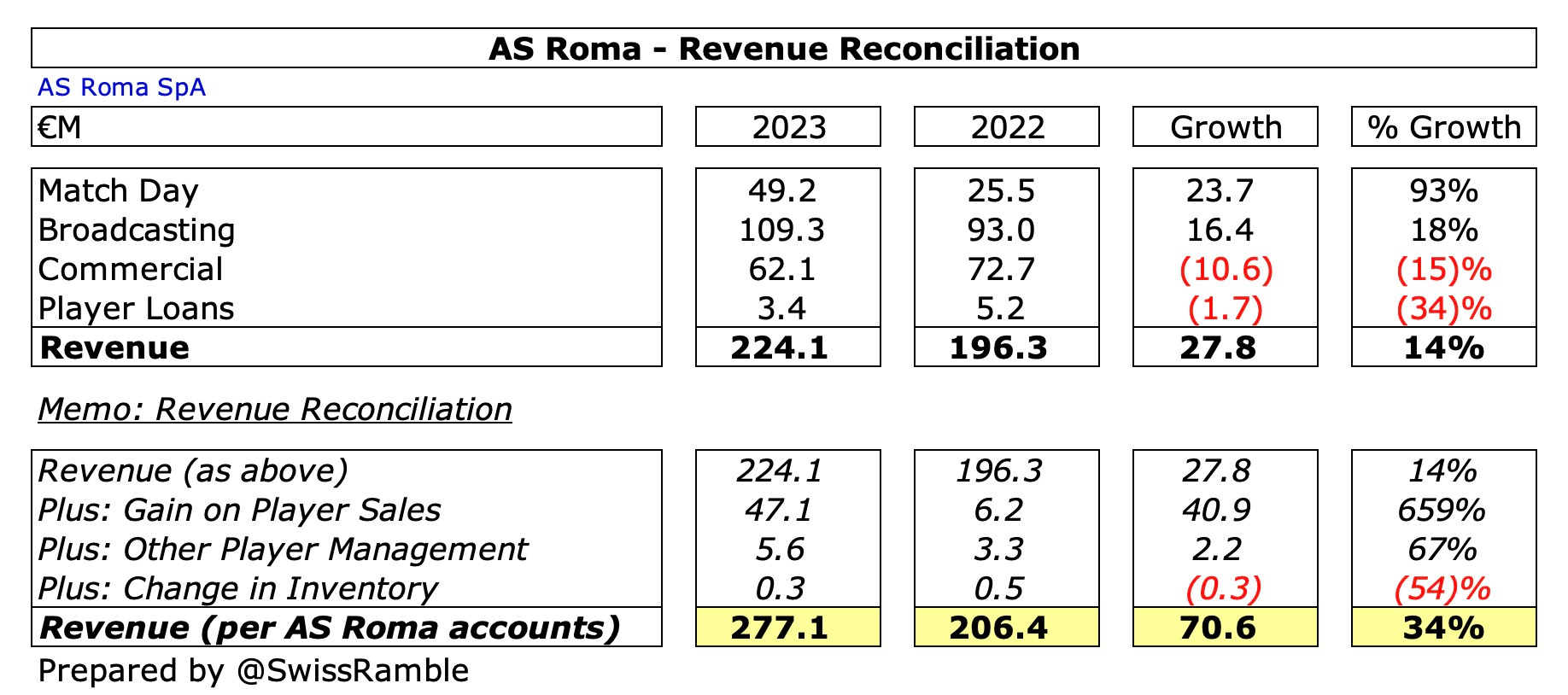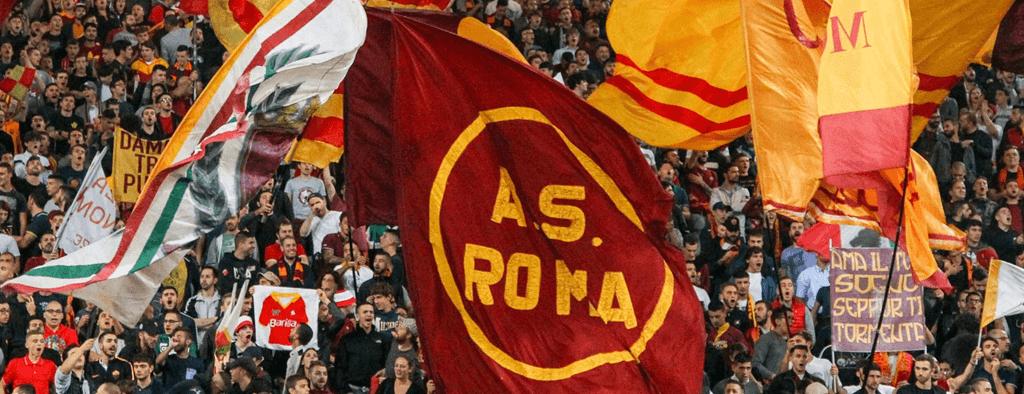
Associazione Sportiva Roma, commonly known as AS Roma, is one of the most prestigious and storied football clubs in Italy. Founded in 1927, Roma has forged a remarkable legacy in both domestic and international football. The club has become synonymous with the vibrant city of Rome, representing the heart and soul of the Italian capital through its iconic red and golden yellow colours. As a club, Roma has experienced periods of glory, passion, and adversity, always remaining a vital force in Serie A and European competitions.
Roma’s journey has been defined by numerous successes, from Serie A titles to Coppa Italia victories and a growing reputation on the international stage. The club’s fierce rivalries, notably with S.S. Lazio, create an intense and often emotional atmosphere around the team, further solidifying Roma as one of Italy’s most prominent football clubs.
But beyond the victories and rivalries, AS Roma represents much more. It’s about community, cultural significance, and tradition. The club’s passionate fanbase, known as the Giallorossi (the yellow and reds), fills the Stadio Olimpico with unrelenting energy, and their loyalty has been a constant driving force behind Roma’s success and ambition.

Roma's colours, carmine red and golden yellow, are symbolic of the club's strong connection to the city of Rome itself. These colours reflect the official seal of the Comune di Roma and represent the imperial dignity of ancient Rome. The red signifies strength and courage, while the gold evokes the wealth and grandeur of the Roman Empire. These colours have earned Roma the affectionate nickname I Giallorossi ("The Yellow and Reds"). The badge of the club features a she-wolf, an important symbol in the myth of Romulus and Remus, the legendary twin brothers who were raised by the she-wolf and later founded the city of Rome. This emblem is not just a club symbol but also a representation of the club's connection to Roman mythology and its deep ties to the identity of the capital.

Over the years, AS Roma has been home to some of the most iconic players in football history. Among these legends, Francesco Totti stands out as the club’s most beloved and celebrated figure. Known as the "Pupone", Totti spent his entire professional career at Roma, breaking records and winning the hearts of millions with his exceptional skill, leadership, and loyalty to the club. Totti became Roma's all-time top scorer and appearance leader, earning the admiration of both his teammates and opponents. He captained Roma for many years, leading them to numerous domestic successes, including the 2000–01 Serie A title.
Other notable players who have shaped Roma’s history include Aldair, the Brazilian centre-back who anchored the defense for many years; Cafu, the legendary right-back and captain of Brazil’s national team; and Daniele De Rossi, a Roma-born player who succeeded Totti as captain. Gabriel Batistuta, one of the greatest strikers in football history, also graced Roma’s attack during the early 2000s, helping them secure the 2001 Serie A title with his clinical finishing.
In more recent years, Paulo Dybala, an Argentine forward who joined Roma in 2022, has quickly become one of the club's most exciting and talented players, showcasing his ability to change games with his technical prowess.
Roma’s most intense rivalry is with S.S. Lazio, the other major football club from Rome. The Derby della Capitale is one of the most heated and emotional footballing rivalries in the world. It has been a fixture of Italian football for decades, marked by fierce competition, passionate fans, and high stakes. Both clubs share the Stadio Olimpico, making the rivalry even more personal. Matches between Roma and Lazio are charged with the pride of representing the capital, and the atmosphere during these derbies is unlike any other.
In addition to Lazio, Roma has rivalries with other top Italian clubs, such as Juventus, Napoli, and Internazionale. These rivalries are born out of competition for Serie A titles and places in European competitions. Matches against these teams are often closely contested and vital for Roma’s chances of securing top positions in the league.

Roma’s fans, known as the Giallorossi, are known for their passion, dedication, and unwavering support for the club. The Curva Sud, located behind the goal at the Stadio Olimpico, is home to the club’s most dedicated supporters, including the ultras. These fans create an electric atmosphere during every Roma match, bringing the stadium to life with their chants, banners, and coordinated displays of loyalty. They are often regarded as some of the most passionate supporters in Italian football, making the Stadio Olimpico one of the most intimidating places for visiting teams.
The club also has a deeply ingrained connection with the city of Rome itself, with fans from all walks of life coming together to support their team. This connection is symbolized by Roma’s iconic anthem, “Roma (non si discute, si ama)”, which roughly translates to "Roma is not to be questioned, it is to be loved." This song, sung by fans before every home match, embodies the loyalty and unconditional love that the Roma fans have for their club.

The Stadio Olimpico, with a capacity of over 72,000, is one of the largest stadiums in Italy and serves as the home of AS Roma. Located in the Foro Italico area of Rome, it is shared with their city rivals Lazio. The stadium has been Roma’s home since 1953, although it was temporarily replaced by the Stadio Flaminio during the 1990 renovations in preparation for the FIFA World Cup. The Olimpico has seen countless memorable moments, with Roma’s passionate fans creating a vibrant atmosphere that gives the team a strong home advantage.
Although Roma shares the stadium with Lazio, the club is looking towards building a new stadium in the future. This new AS Roma stadium would allow the club to create a state-of-the-art facility to further solidify its status as one of Europe’s top football clubs.

The AS Roma kit is instantly recognizable, with the club’s traditional carmin red shirts paired with golden yellow accents. The club’s home kit has evolved over the years but has always retained its deep connection to the city of Rome and its heritage. The badge, featuring the she-wolf, is an enduring symbol of the club’s identity, and it reflects Roma’s pride in its historical roots.
Throughout the years, Roma's kit suppliers have included some of the most renowned sportswear brands in the world, including Nike, Adidas, and Kappa. The club has also had various sponsors over the years, with notable names such as Wind and Qatar Airways appearing on the front of their shirts.

AS Roma, officially founded in 1927, emerged from the merger of three smaller Roman clubs: Roman FC, SS Alba-Audace, and Fortitudo-Pro Roma SGS. The driving force behind this merger was to create a competitive club that could challenge the dominance of northern Italy’s football giants, especially in Serie A. During its early years, the club was met with challenges, but quickly gained recognition in Italy.
Roma’s early period was marked by struggles in finding its feet within the Italian top division, but their first significant achievement came in the 1930-31 season, where they finished as runners-up in Serie A. This solidified Roma's position as a competitive team in Italian football. Roma's first major triumph came in 1941-42, when they won their first Serie A title, with the iconic Amedeo Amadei leading the charge. This victory marked a historic moment in the club’s history, and the foundation was laid for Roma's future ambitions. The 1940s were pivotal in establishing the club’s roots, setting the stage for Roma’s role in the Italian and European football landscape.

The years following World War II were difficult for Roma. In the 1950s, the club faced a decline in form, culminating in Roma's only relegation to Serie B in 1951-52. However, Roma quickly returned to Serie A after securing promotion in 1952. Their determination to restore their legacy was evident in their return to the top flight, where the team slowly regained its position as a prominent club in Italy.
The 1960s marked the resurgence of Roma. They won their first Coppa Italia in 1964 and also secured international glory by winning the Inter-Cities Fairs Cup in 1961, defeating Birmingham City 4-2 in the final. The club also established a reputation for nurturing great talent, with Giacomo Losi and Dino da Costa being among the key figures of the time. However, despite their successes, Roma’s fortunes fluctuated, and they struggled to maintain consistency in league performances. The 1960s were a time of both rebuilding and establishing Roma as a club to watch in both domestic and European competitions.

The 1980s was undoubtedly the golden era of AS Roma. During this period, the club experienced domestic success, securing their second Serie A title in 1982-83 after a 41-year wait since their first championship. Roma’s title win in the 1982-83 season was a momentous occasion for the club, and it marked the rise of players like Bruno Conti, Agostino Di Bartolomei, and Roberto Pruzzo. The club was strong both in defense and attack, blending Italian tactical discipline with flair, particularly thanks to the inclusion of Brazilian midfielder Falcão, who became one of the most influential figures of the decade.
Roma's reputation on the European stage also soared during the 1980s. They reached the European Cup final in 1984, where they faced Liverpool. The final ended in a 1-1 draw, but Roma lost 4-2 in the penalty shootout, marking one of the most dramatic and emotional matches in the club's history. Despite losing, Roma’s European pedigree was firmly established, and their 1980s run remains one of their finest chapters.
/cdn.vox-cdn.com/uploads/chorus_image/image/66501337/1198368512.jpg.0.jpg)
The 1990s and 2000s were characterized by the rise of Francesco Totti, Roma's most iconic player. Totti, known as the "Pupone" (The Big Baby), made his debut for Roma in 1992 and quickly became the club’s captain and leader. Totti's loyalty to Roma was unmatched, and he became the all-time top scorer and appearance leader for the club, leaving a legacy that is unlikely to ever be surpassed. Totti was pivotal in Roma's third Serie A title win in 2000-01, where he led the team to victory in the Scudetto. His leadership, vision, and skill were crucial in Roma’s dominance that season, as they clinched the title with a 3-1 win over Parma on the final matchday.
Throughout this era, Roma boasted an array of international talent such as Cafu, Gabriel Batistuta, and Aldair, who played alongside Totti to build a strong squad capable of competing for Serie A titles and European honours. Roma consistently finished near the top of the league, but their performances in European competitions fell short of the success they achieved in Serie A. However, Roma remained competitive, and Totti’s presence at the heart of the team ensured that the club’s success continued.

The 2010s were a time of transition for AS Roma. The Sensi family, who had owned the club for decades, sold Roma to the American investment group led by James Pallotta in 2011. This shift in ownership marked the beginning of a new era for the club. However, Roma faced a series of financial challenges and struggled to regain the level of success they had achieved during the Totti-led era.
Despite these difficulties, Roma maintained their competitiveness in Serie A, regularly finishing in the top positions and securing European qualification. One of the standout moments of the 2010s came in 2017-18 when Roma pulled off one of the most remarkable comebacks in football history. In the UEFA Champions League quarter-finals, Roma faced Barcelona and overturned a 4-1 first-leg deficit by winning 3-0 in the second leg, securing a place in the semi-finals for the first time since 1984.
However, it wasn’t just in Serie A and Champions League where Roma found success. In 2021, Roma secured their first major European trophy in over 60 years, winning the UEFA Conference League under the leadership of José Mourinho, the renowned Portuguese manager. Mourinho led the team to victory in the Conference League Final against Feyenoord, a triumph that further solidified his status as one of football’s greatest coaches. The win was monumental for Roma, as it marked their return to European glory after decades of near-misses.

The appointment of José Mourinho in 2021 ushered in a new era of ambition for AS Roma. Known for his success at top European clubs like Porto, Chelsea, Inter Milan, and Manchester United, Mourinho brought an air of experience, tactical acumen, and a winning mentality to Roma. Under his leadership, the club enjoyed immediate success, winning the UEFA Conference League in 2022, marking a historic moment for the club.
Mourinho's influence was immediately felt in both domestic and European competitions. He instilled a strong defensive structure, while maintaining Roma’s attacking prowess, particularly through the creative brilliance of players like Paulo Dybala. Mourinho’s ability to manage big personalities and handle the pressures of both Serie A and European competition was evident in Roma’s ability to compete at the top level despite the challenges they faced.
In the 2020s, Roma has also been focused on stabilising its financial position, rebuilding the squad, and pursuing both domestic titles and a return to the upper echelons of European football. The club has seen an influx of international talent, with Dybala’s arrival in 2022 being a notable highlight. Mourinho’s leadership has brought renewed hope to the Roma faithful, with the club’s fortunes once again looking bright.
Additionally, the club continues to pursue a new stadium, the Stadio della Roma, which will provide Roma with a modern home that could elevate the club to new heights in terms of revenue and global stature. The stadium project has faced various delays, but it is now set to begin construction in the mid-2020s, which will give Roma a major infrastructure boost.

The ownership of AS Roma has undergone significant changes over the years. In the 2010s, the club was acquired by the American investment group, led by James Pallotta, as part of a restructuring effort. Pallotta’s consortium took over in 2011, and during his time as president, AS Roma navigated through financial difficulties and attempted to elevate the club both domestically and internationally.
In 2020, however, the club underwent another shift in ownership when Dan Friedkin, a prominent American businessman and owner of the Friedkin Group, took control of AS Roma. The deal was valued at approximately €591 million, and it marked a new chapter for the club. Friedkin, who has a history of investing in automotive and aviation industries, assumed the role of the club’s president and immediately began implementing his vision for AS Roma’s long-term success.
The Friedkin Group’s acquisition brought a wave of renewed investment, focusing on stabilizing the club’s finances and infrastructure while aiming to restore Roma to the top echelons of both Italian and European football. Friedkin’s ownership has brought a more strategic and professional approach to managing the club’s financials, fostering a clear pathway toward greater stability and success.

AS Roma has historically faced financial challenges, especially during ownership changes and periods of underperformance. During the Pallotta era, the club sought to modernize operations and sought major investments. However, the financial situation remained difficult at times, marked by several capital injections and loan agreements to maintain liquidity.
Under Friedkin’s ownership, the club has pursued a more balanced financial strategy. The Friedkin Group’s approach aims to reduce debt, improve revenue generation, and increase the club’s commercial activities. As of the 2023-2024 season, AS Roma has been working toward achieving financial sustainability, although the club still faces the challenges typical of football clubs that are competing at the highest levels without the wealth of some of their rivals.
Key aspects of AS Roma’s financial strategy include:
Roma has made significant progress in achieving compliance with UEFA Financial Fair Play (FFP) regulations, ensuring the club avoids penalties and remains competitive on the European stage.

Stadio Olimpico:
Roma’s home stadium is the Stadio Olimpico, which it shares with city rivals S.S. Lazio. Located in the Foro Italico area of Rome, the stadium has been Roma’s home since 1953. It has a capacity of 72,000 seats, making it the second-largest stadium in Italy, only behind San Siro in Milan. The Olimpico has hosted many of Roma’s most memorable matches, and it remains an iconic venue for the club’s fans.
However, AS Roma has long aspired to build their own dedicated stadium to provide the club with a modern home, increase matchday revenue, and enhance the fan experience. The Stadio della Roma project, initially announced in 2012, has faced delays and challenges related to planning permissions, local government approvals, and the financial investment required for such an ambitious project. The project’s construction was slated to begin in 2025, with completion expected around 2028, marking a significant leap forward for the club’s infrastructure. Once completed, Stadio della Roma would offer a 52,500-seat stadium with state-of-the-art facilities, providing Roma with a dedicated home and enabling the club to grow its commercial activities significantly.
Trigoria Training Complex:
The club's training facilities are based in Trigoria, a sports complex located about 10 km south of the city centre of Rome. Purchased in 1977, the complex includes several training pitches, administrative offices, and the Fulvio Bernardini Training Centre, named after a club legend. This centre serves as the hub for Roma’s first-team training, youth academy, and other club activities.
In 2019, Roma expanded the Trigoria site to include a private school for youth academy players, known as the Liceo Scientifico Sportivo A.S. Roma. This initiative aims to combine education with professional football training, ensuring that Roma's young players receive a well-rounded experience as they prepare for a future in the sport.

Roma has a long-standing tradition of nurturing young talent, and the club’s youth academy plays a key role in the development of future stars. Over the years, Roma’s academy has produced a wealth of talented players, many of whom have gone on to become club icons. Players like Francesco Totti, Daniele De Rossi, and Alessandro Florenzi have all come through the youth ranks, highlighting the academy’s importance to the club’s philosophy.
AS Roma’s Primavera team (the U19 team) is a key component of this development process, participating in the Campionato Primavera and providing the next generation of players with opportunities to make their mark in the first team. The club continues to invest in its youth infrastructure, ensuring that Roma’s future is built on a strong foundation of homegrown talent.
The Academy Manager role, currently held by Bruno Conti, a club legend, emphasizes the importance Roma places on youth development. The goal is to create a pipeline of talent that can support the first-team squad and potentially be sold to generate further revenue for the club.

To ensure long-term financial success, AS Roma has focused heavily on commercial development. As part of their efforts to enhance the club’s global profile, Roma has pursued international partnerships with corporate sponsors across various sectors, including Qatar Airways, Hyundai, Adidas, and DigitalBits. These partnerships have helped increase the club’s global reach, while providing much-needed financial backing.
The club’s merchandising strategy has been instrumental in expanding its commercial footprint. Roma’s jerseys, scarves, and other merchandise are sold worldwide, with the club’s global fanbase playing a significant role in its financial strategy.

AS Roma’s overarching goal is to build a sustainable and successful football club that competes at the highest level of both Serie A and European football. The ongoing Stadio della Roma project is expected to be a key factor in enhancing matchday revenues and boosting Roma’s brand value. The club is also aiming to increase their commercial revenues, with an emphasis on expanding their international fanbase and tapping into new markets.
Under the leadership of José Mourinho, Roma is targeting immediate success in Serie A, aiming for European qualification and potential trophy challenges. The Friedkin Group continues to invest in the club’s infrastructure and is focusing on stabilizing Roma’s financial standing, while ensuring that the club remains competitive at both the domestic and European levels.
Domestic Titles:
International Titles:
Other Titles:
Notable Individual Awards:
Hall of Fame Inductees (since 2012):
Books:
Websites:
Articles:
Interviews and Documentaries:


Becoming a leading global provider of digital solutions and services for the sports industry, enabling our clients to achieve their goals and reach their full potential.
We aspire to be a trusted partner and advisor to our clients, leveraging our expertise and passion for sports to help them succeed in a rapidly changing market.






